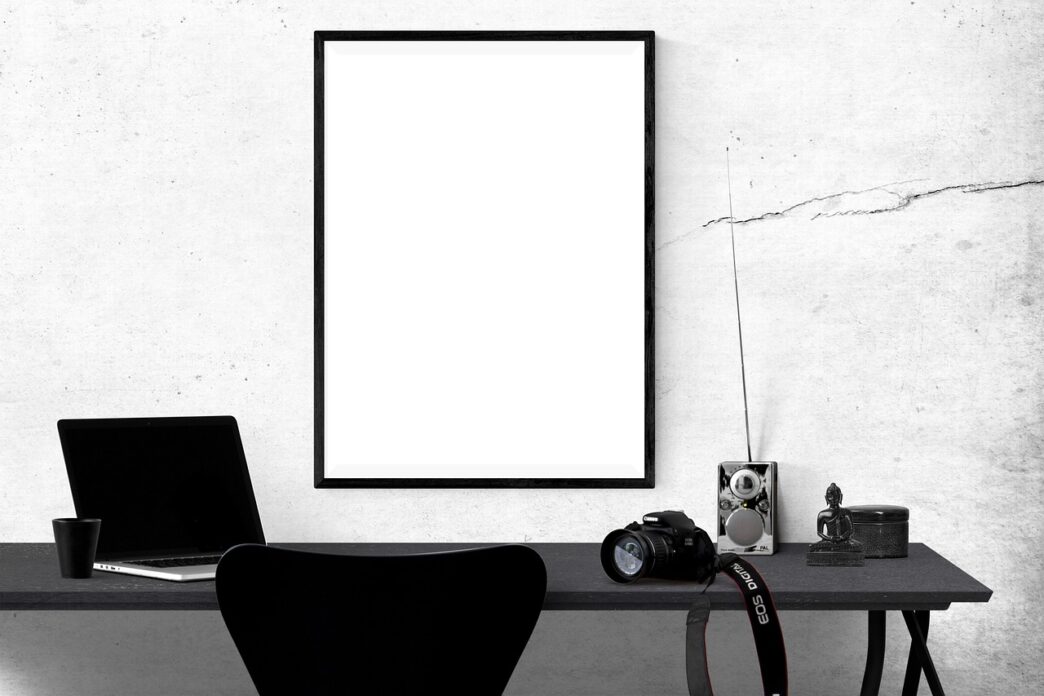Framing a poster sounds easy. Pop it in, slap on some glass, done. Right? If only. A good frame can take a crumpled print from dorm room disaster to gallery-worthy brilliance. A bad one can turn your masterpiece into a warped, uneven eyesore. But with the right approach, you can frame a poster so well that it looks like it belongs in a high-end art space rather than taped up in the corner of your bedroom.
Choosing the Right Size
Measure twice, buy once. Posters are not all standard-sized, and frame sizes can be deceiving. If your poster is a little smaller than the frame, you will need a mat board to fill in the gap. If it is too big, trimming a wooden frame is an option, but that is a risky move unless you know exactly what you are doing. Nobody wants to accidentally slice into an expensive print.
If you are using a mat, factor that into your frame size. The right mat can elevate a simple poster to look like a professional print. The wrong one can look like a kid’s school project. A little contrast is good, but too much space between the artwork and the frame can make things feel disconnected.
Getting the Right Frame
A frame is not just a border. It is the finishing touch that can make or break the look of your poster. Get one that is too chunky, and it swallows the artwork. Too thin, and it might not hold up. The right choice depends on the poster itself. A vintage film print might look stellar in a minimalistic but sturdy poster frame, while an art print could shine with something more ornate.
Material matters too. Wooden frames add warmth, metal ones are sleek and modern, and acrylic options keep things budget-friendly. If your poster is oversized, you should avoid flimsy frames that bow under pressure. Nobody wants a frame that warps over time, so be a little picky, especially if you want to preserve the poster.
Prepping the Poster
Posters spend most of their lives rolled up, stuffed in tubes, or pinned to walls. That means wrinkles, creases, or curled edges are inevitable. Lay your poster flat under some heavy books for a few hours, or even overnight if it is really stubborn. If you are dealing with serious wrinkles, a gentle pass with an iron on a low setting will definitely smooth things out. Be careful, though. The last thing you want is a scorched poster.
If the edges are frayed or torn, do not just shove it in the frame and hope for the best. Some clear archival tape on the back can reinforce weak spots without damaging the artwork. The goal is to make the poster look as pristine as possible before it even touches the frame.
Choosing Your Backing
Not all frames come with a good backing, and that is a problem, unlike with 3D printing, where structure is built in layer by layer. A flimsy cardboard insert will not do much to keep your poster in place. A foam board is a much better option, giving support and preventing sagging over time. If you are serious about preservation, acid-free backing is the way to go. It stops yellowing and keeps your poster looking fresh for years.
If your frame does not have clips or fasteners to keep things snug, a little acid-free tape on the back of the poster will hold it in place without damaging it. Do not go overboard, as too much tape makes removal a nightmare.
Picking the Right Glass or Acrylic
Glass has that nice weight and clarity, but it’s breakable. Glass can also be heavy for larger posters. Acrylic is lighter, and it usually offers UV protection. However, acrylic is easier to scratch and damage. If you are framing something valuable, UV protection is a must. Sunlight can turn vibrant colors into a dull disaster faster than you think, so take that into account.
Regular glass is fine for most posters, but if glare is an issue, opt for non-reflective glass. It softens the shine and keeps the focus on the artwork. Just keep in mind that non-reflective glass can dull colors slightly, so it is a trade-off.
Assembling the Frame
Now for the fun part. If your frame has a removable back, take it off and lay everything out. If it does not, you might have to pop open metal clips or screws.
Clean the glass or acrylic before placing the poster inside. Nothing is worse than sealing it up and realizing there is a stray fingerprint or speck of dust right in the middle. A microfiber cloth and some glass cleaner will do the trick. Just make sure it is completely dry before you proceed.
Place the poster on the backing, making sure it is centered and straight. If you are using a mat, make sure to align it carefully. Once everything looks right, you can secure the backing in place. Some frames use clips, some have bendable metal tabs, and some require a bit of patience and finagling.
Securing and Hanging the Frame
Frames with built-in hanging hardware are convenient, but they do not always sit straight. If yours does not come with hooks, attach some D-rings and wire for a more stable hold. Avoid the cheap sawtooth hangers unless your frame is very light.
If you are hanging it on a wall, consider the weight. Heavy frames need proper anchors, not just a flimsy nail. If you are renting and cannot drill into the wall, go for command strips rated for the right weight. They are surprisingly strong if applied properly.
Now, once your poster is framed and looking perfect, do not forget about it. Dust and smudges build up over time, especially on glass. A quick wipe-down every now and then keeps it looking fresh. If you’ve used acrylic, avoid anything too abrasive. A soft cloth and a little warm water work best.
Conclusion
A well-framed poster can elevate a space, protect the artwork, and make you feel like you actually have your life together. Even if the rest of the room is a mess, at least your walls will be impressive. So take your time, pick the right materials, and do it properly. Your future self will thank you every time they walk past and admire the masterpiece you put together.
Also, read: company incorporation














